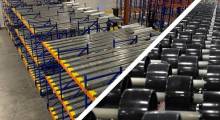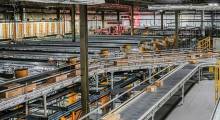Standards and regulations are designed to provide a basic level of safety inside industrial facilities. But because many are vaguely worded, proper safeguarding of people and equipment often falls short of the intended goal. Tasked with separating multi-ton equipment from people, structures and drops, lift truck barriers require some of the most extreme performance among industrial safety solutions. Yet, they are also among the least understood.
“Just because it’s yellow and metal, doesn’t mean it’s providing any protection,” says Brian Hrabec, general manager of A-Safe. “Then again, an OSHA regulation calling for ‘separate areas and paths for people and equipment’ could be interpreted as a green painted line, so I suppose a yellow bollard is better than nothing.”
The problem is when a bollard expected to stop a lift truck proves about as effective as a strip of paint. It all comes down to physics, Hrabec says. One product might be rated to withstand a 90-degree impact from a 10,000-pound lift truck at 3 miles per hour. If the equipment is any larger, or smaller but traveling faster, that’s a problem—and designing a bollard to handle an extra ton or two can be exponentially more expensive. And, that is assuming a barrier’s rating is even known.
After an impact, aside from damage to the equipment, there are more costs as the barrier and, in many cases, the floor need to be replaced or repaired. These costs are preferable to an injury, but a well-designed barrier can provide benefits even when never touched.
“Barriers can be used to help design the traffic flow of lift trucks and employees through a facility,” Hrabec says. “Certain patterns can help save time if they enable the fastest route from point A to point B.”
Conversely, traffic also informs barrier design, such as the use of a steel bollard in a low-traffic area or a flexible polymer barrier in an environment prone to impacts. A new set of considerations emerges in cold storage facilities, where the behavior of polymers and concrete is again subject to physics.
Unpainted polymer barriers are often used in food-safe and cold applications because of their ability to transfer only 20% of an impact’s force into the anchor and the more brittle concrete floor. Space is at a premium, especially in cold storage, but whether it’s -40°F or 120°F the right barrier can prove a worthwhile investment.








